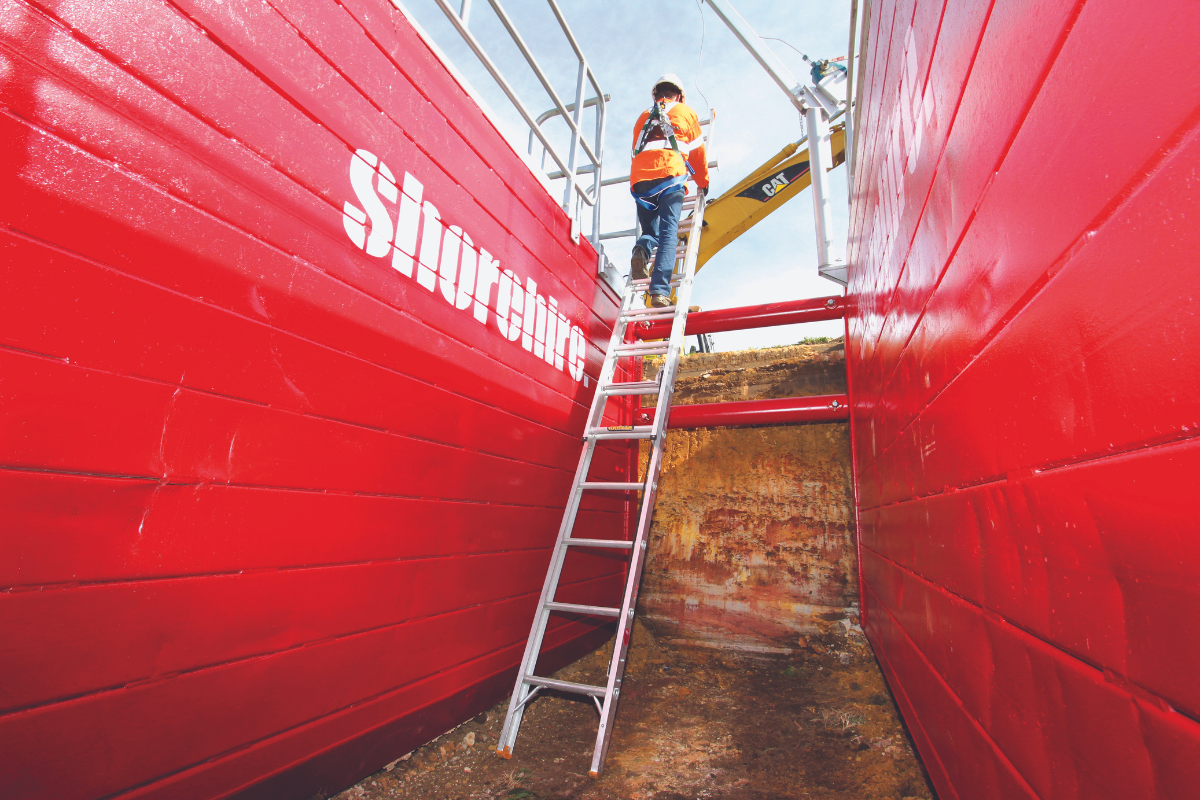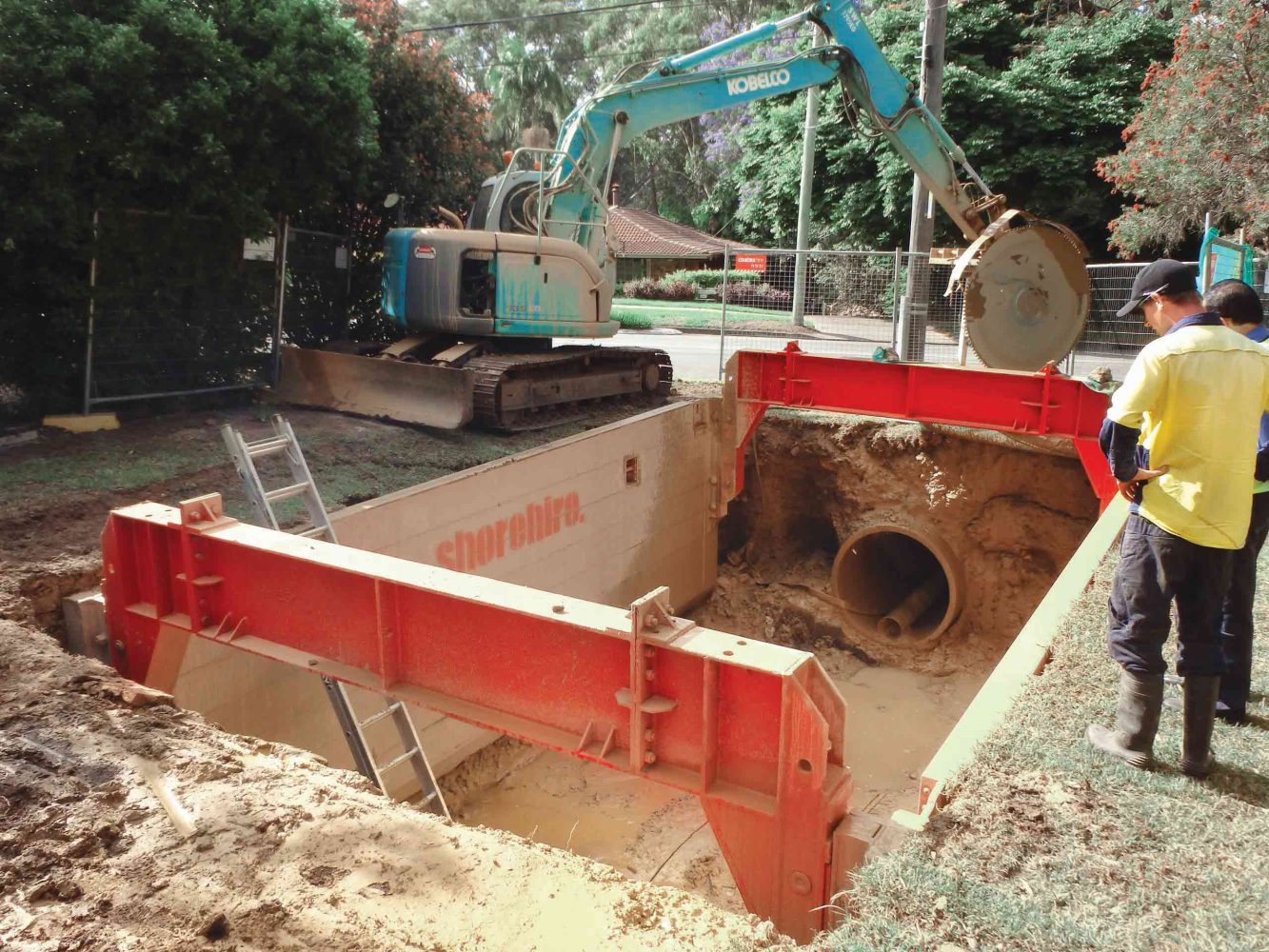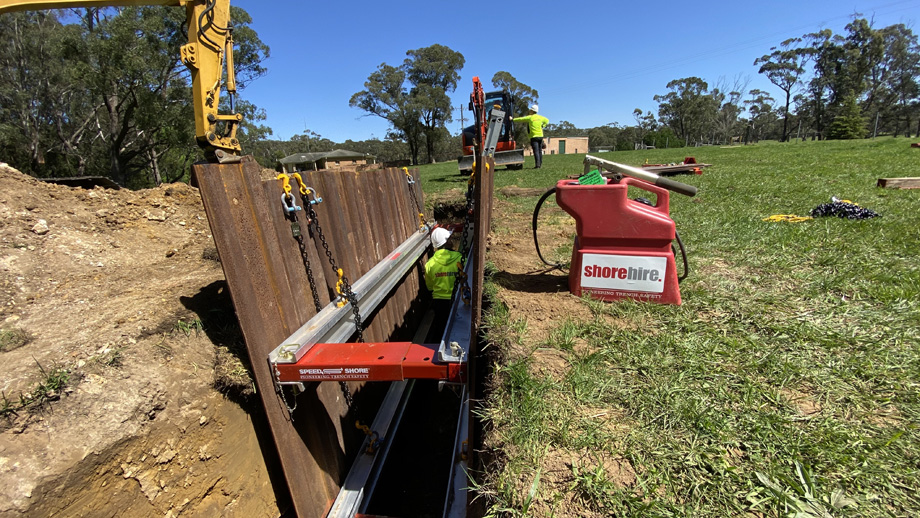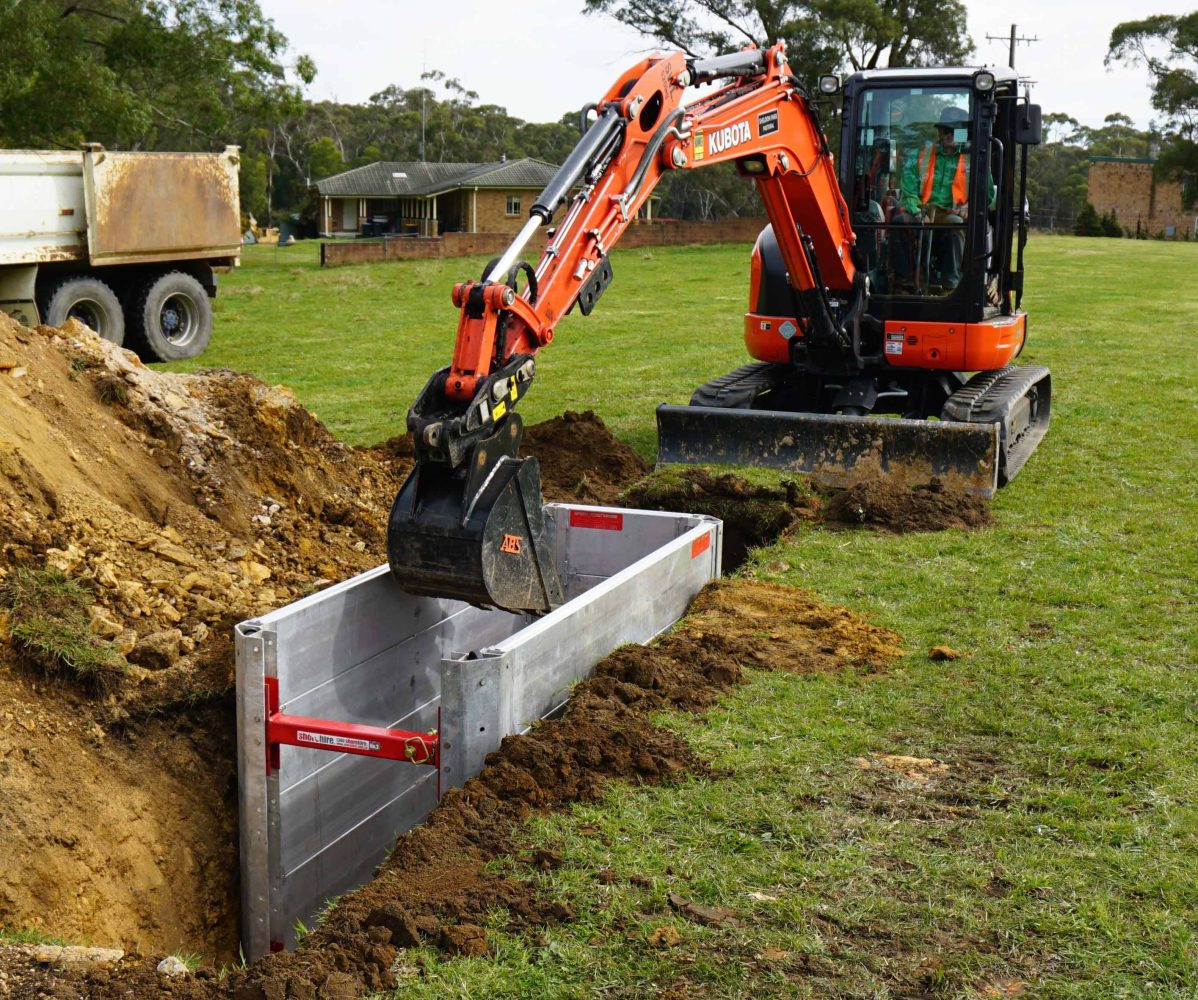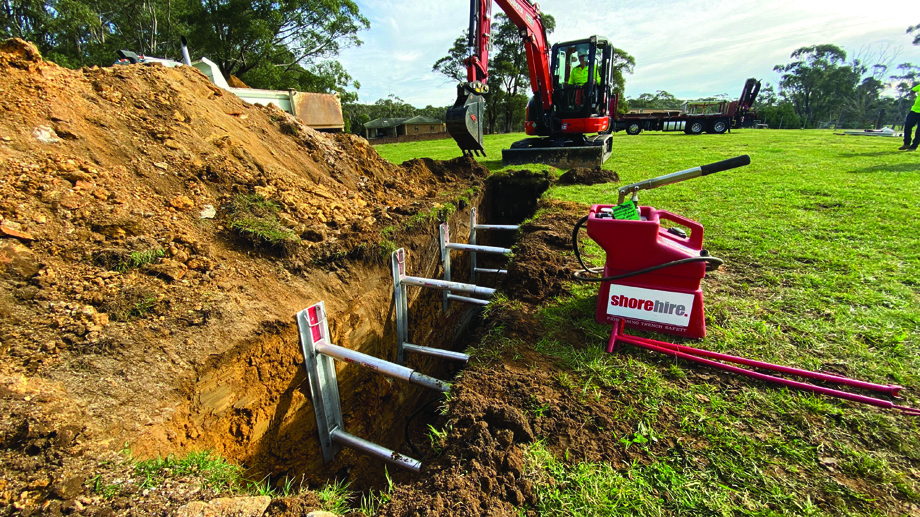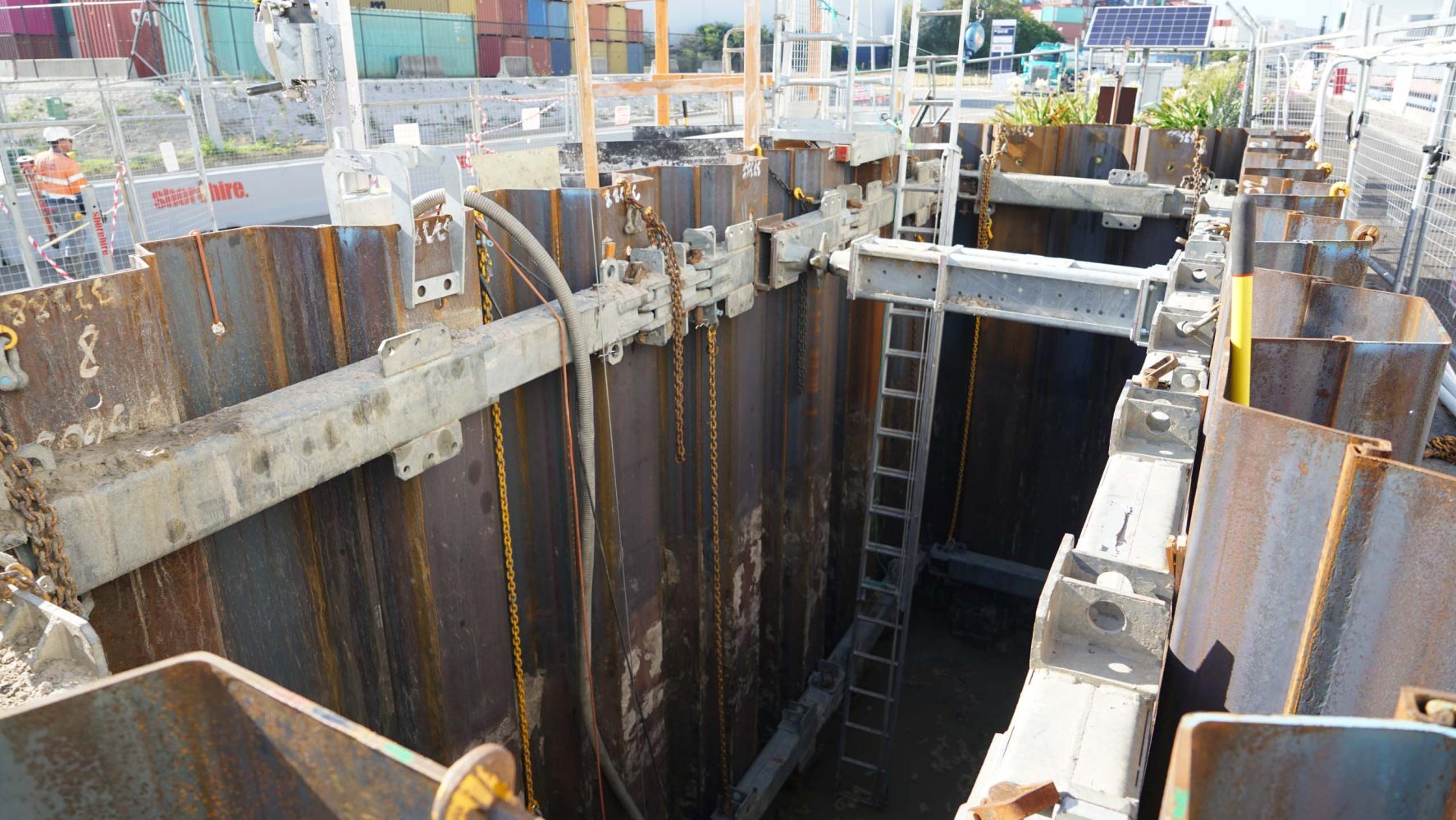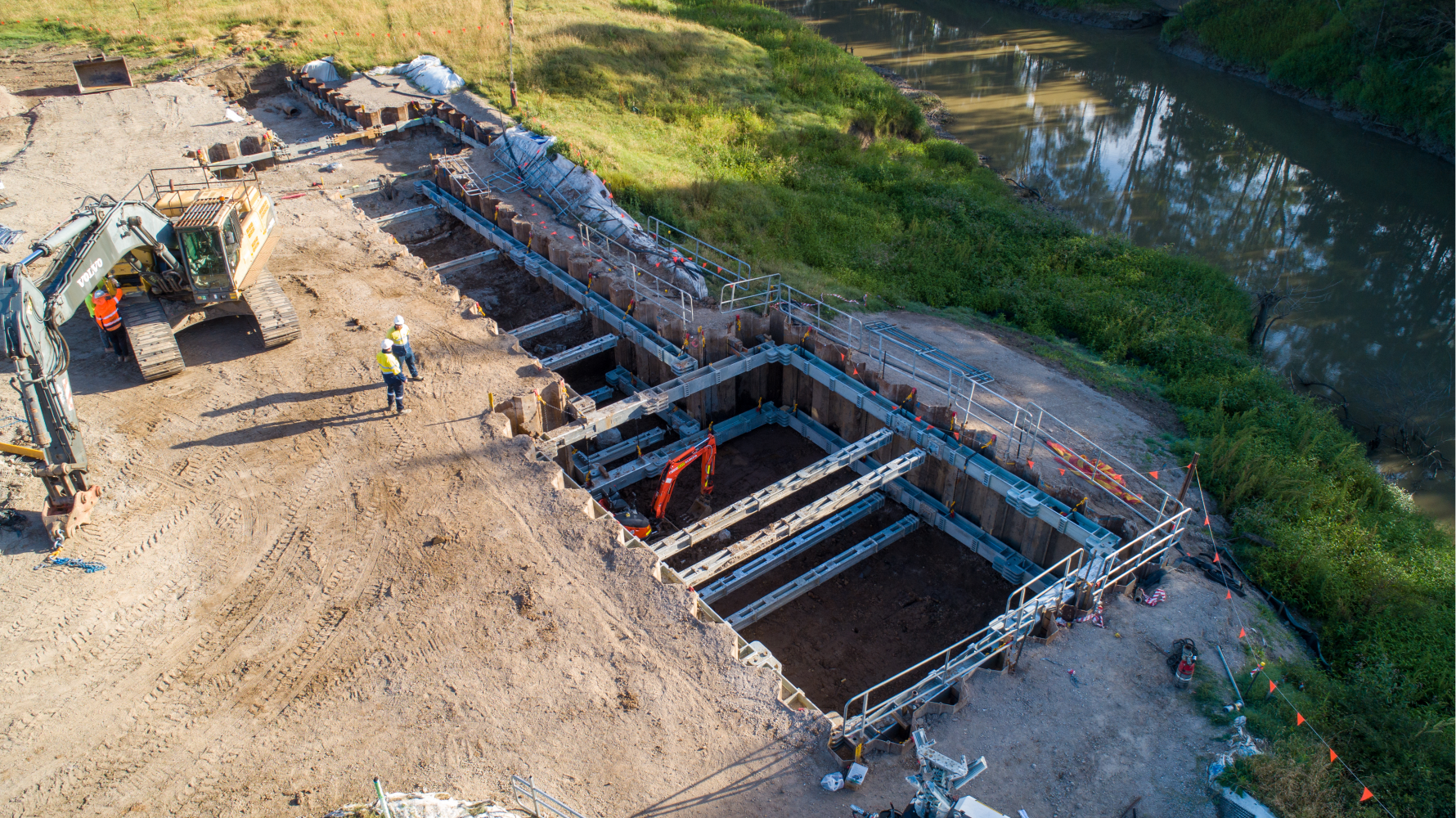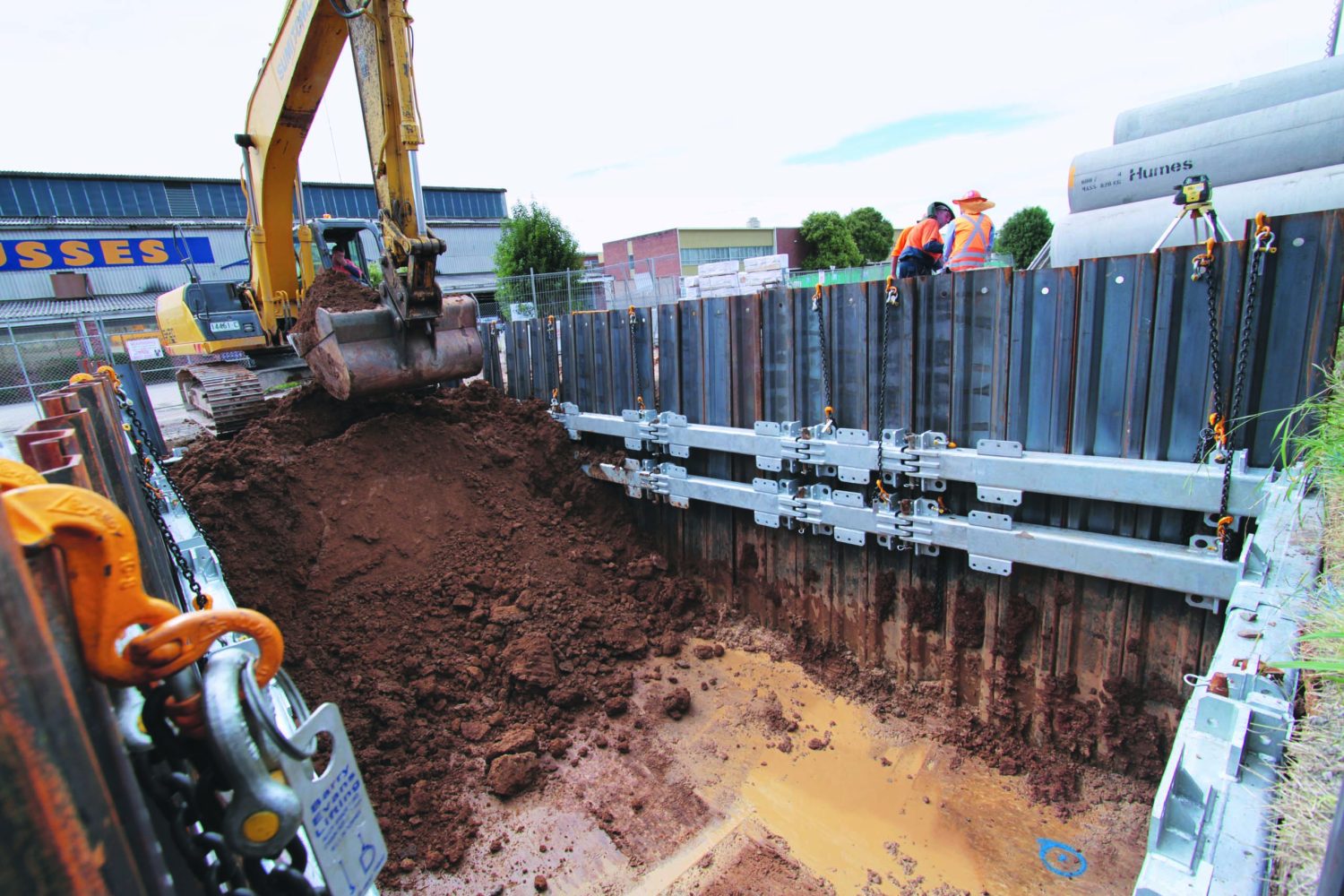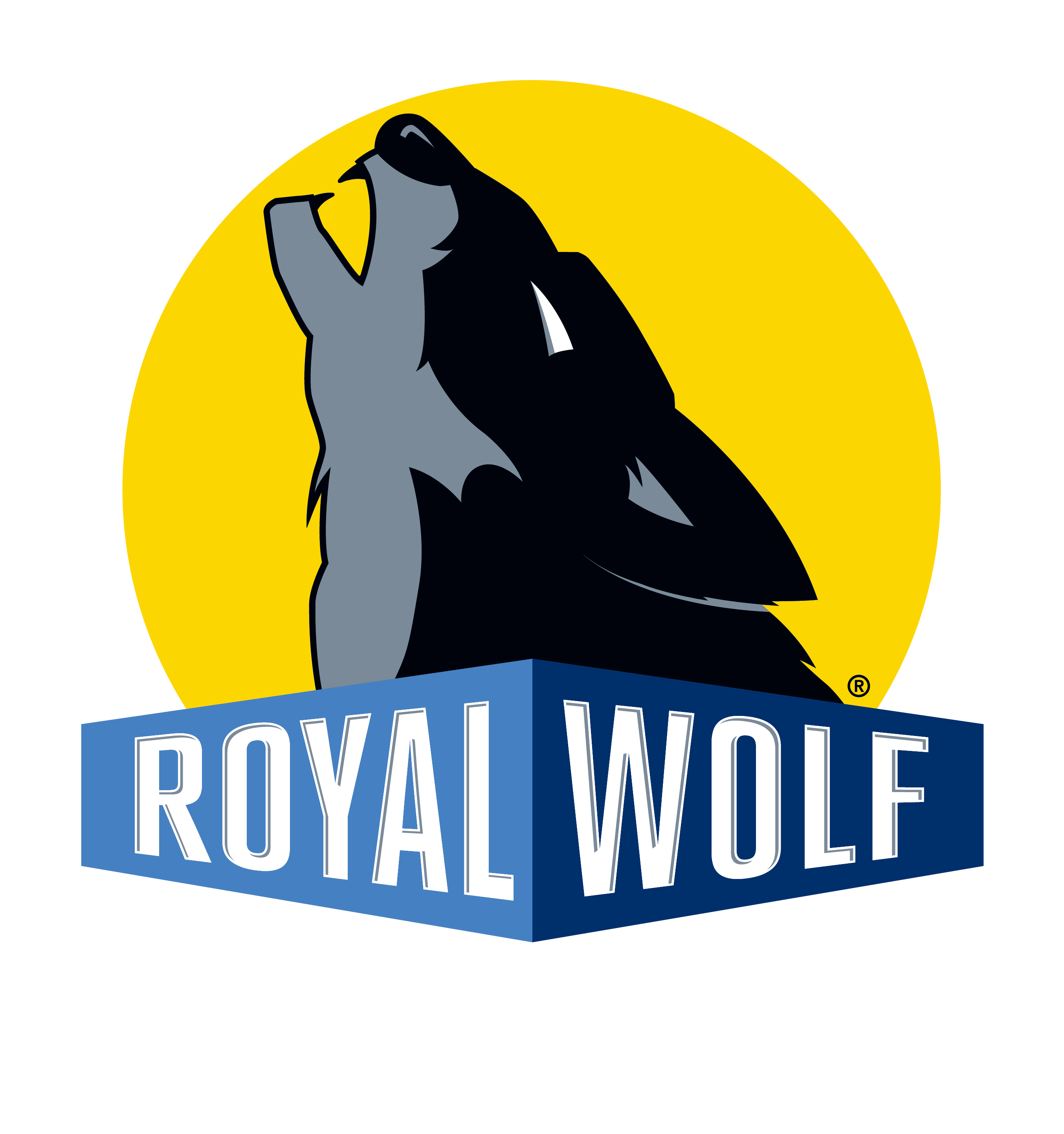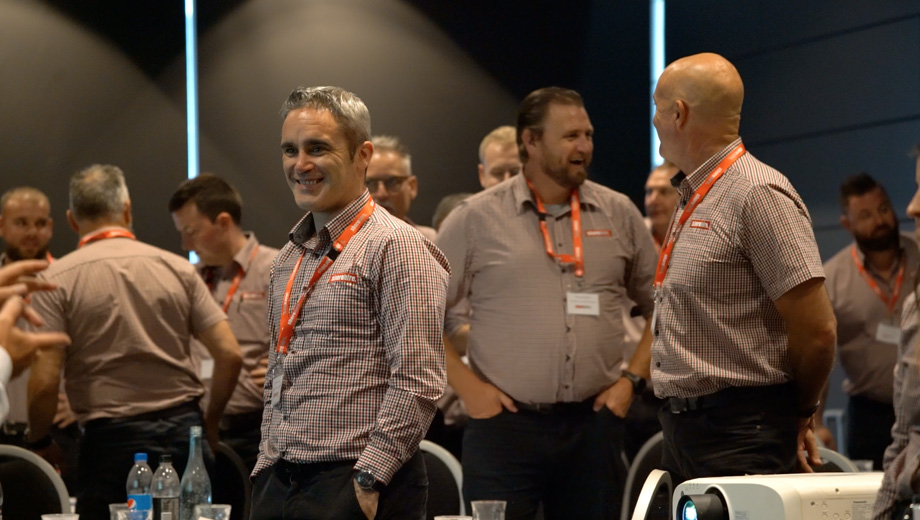Home Blog Product Info Everything You Need to Know About Shoring
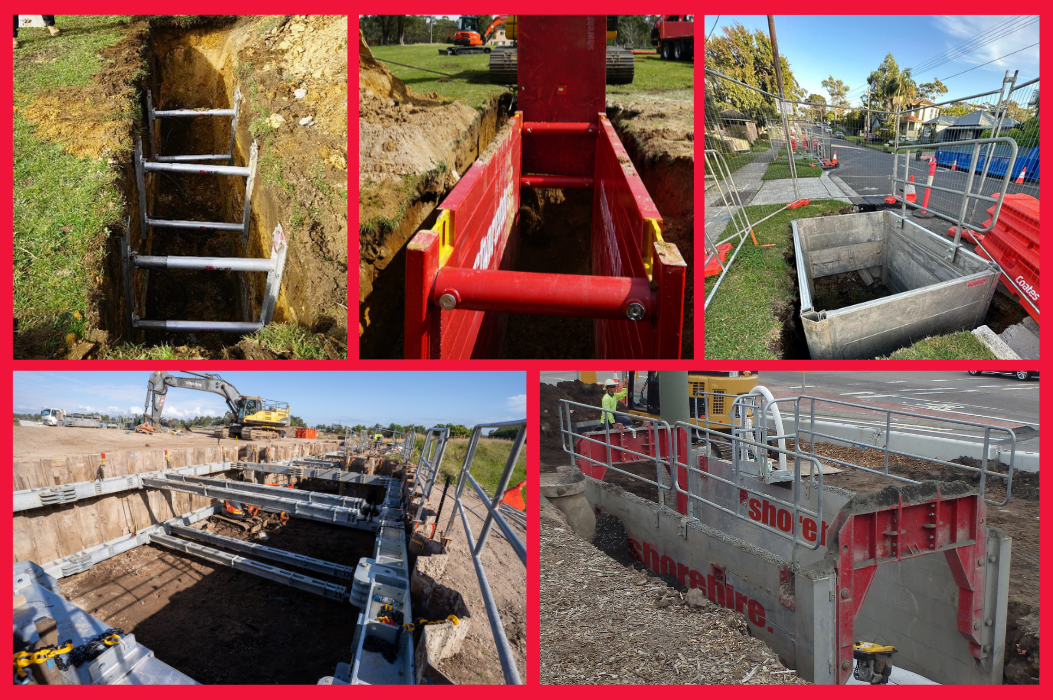
Shoring is often an integral part of construction projects, and whether you are planning a large construction project, installing a pipe, or doing an archaeological dig, understanding the fundamentals of shoring is crucial to the success of your project.
In this blog, we will tell you all you need to know about shoring, including when it is required, how it can be installed, some key trench shoring terms, and how to stay safe when shoring.
What EXACTLY IS SHORING?
Shoring refers to using a solution or product in order to support an excavation and/or reinforce a trench, this will typically involve something like a shoring box bracing against two open sides of a trench in order to retain the braced soil. The most common method of shoring is done by using a shoring or trench box, which can come in various lengths, widths, and base materials.
when is shoring required?
Workplace Health & Safety in Australia states that if a trench has an excavated depth of greater than 1.5m, it is considered ‘high-risk construction work’ and must be supported by an excavation method, this will most often be shoring. It’s important to note, however, that even if an excavation is less than 1.5m deep there are still many instances in which shoring it up will be necessary in order to make sure it is safe to work in.
WHAT IS A SHORING OR TRENCH BOX?
A shoring box is a system often constructed from aluminium or steel, and consists of two plates or shields that are held apart by struts placed laterally to the plates in order to brace them.
Shoring boxes come in a range of varying lengths, thicknesses, widths, and weights, and are typically used to support excavations on construction sites.
HOW CAN SHORING BOXES BE INSTALLED?
There are many ways shoring boxes can be installed, and it is often dependent on the site being excavated, the specific box being used, and the machinery available.
The first method that can be used to install a shoring box is called the Dig & Push method. This is where a box is lowered into a trench that is not yet fully dug out, and then the back of an excavator bucket is used to carefully push down each corner of the box while the excavator occasionally redigs further into the soil to install it in the ground.
The majority of our trench boxes have panels that “toe-out”, meaning that they are designed to be slanted slightly inwards, making the Dig & Push method an ideal way to install them and also giving them added stability at greater depths.
The other commonly used method for installing shoring is the Dig & Place method, where, using lifting chains or similar, the box is lowered into a trench that has been completely dug out to the required depth, length, and width. This method is preferred on smaller excavations where there is minimal risk of the trench collapsing in on itself while unshored fully, or when the Dig & Push method would damage the shoring box.
The bottom lip of our trench boxes is cut to be angled outwards, helping them go into the ground better and easier. This is known as being “knife-edged”, meaning the boxes can be easily installed using either the Dig & Place or Dig & Push method.
WHAT ARE THE OTHER TYPES OF EXCAVATION SUPPORT METHODS?
There are a number of different types of excavation techniques that can be used instead of, or as well as, shoring. It’s important to determine what excavation support method may be required for your project to make it as safe as possible for people working in excavated trenches, if you’re unsure, then get in touch and one of our friendly experts can help you decide which solution will be most suitable.
Benching vs Battering:
Benching is an excavation method where a series of even steps are cut into the sides of the soil to act as a safeguard against sites collapsing and sliding. It is traditionally done at a 2:1 length-height ratio to achieve the required level of stability so that if the top level were to collapse, it would not fall into the bottom of the trench. The benching method requires a lot more material to be excavated than shoring, which often leads to larger labour and machine hire costs.
Battering is often used in conjunction with benching and is ‘any wall that has been built with an intentional slope’. This means that the sides are self-supporting, and the excavated slope is safe when the ground is safe. Battering requires far more material to be excavated than shoring, leading to larger labour and machine hire costs. Battering also takes up the most space, so is often not suitable for metro or residential projects.
Shielding vs Shoring:
Shielding and shoring are often seen as interchangeable terms but they are slightly different, shielding refers to a system that is put in place, often a shoring box, and acts as a safeguard against potential collapse rather than a preventative measure. This is because the system inside the trench isn’t fully expanded against the material of the excavation, it just sits within it to ‘shield’ from any debris or soil collapsing inwards.
What is Sheeting?
Sheeting is another method of shoring a trench where trench sheets or sheet piles made of corrugated steel are used to make continuous overlapping walls inside an excavation. They are commonly used in large tank installations, interceptor chambers, pump stations, stormwater pits, gross pollutant traps, bore pits, and lift wells.
Accessories such as driving caps, sheet extractors, and Excavator Mounted Vibrators (EMVs) help to make the installation and removal of the sheeting as hassle-free as possible.
Sheeting is often combined with a framing solution such as aluminium walers or the much heavier-duty Shore Brace 400 Hydraulic bracing system in order to secure the sheets against the excavation for maximised stability.
What are Vertishores?
Vertishores, sometimes referred to as vertical shores, are a very unique shoring solution that involves using small panels connected with hydraulic struts braced directly against soil and spaced out linearly throughout the trench.
Vertishores use a principle known as ‘soil arching’, which means they compact the soil around the vertishore panel to make the trench fully safe even without sheeting or plywood having to be used. It’s important to note that vertishores can only be used in shallow trenches, usually less than 3m deep, and in good solid soil, as they have much less capacity than something like a steel shoring box.
What are Launch and Receive Pits?
Launch and receive pits are referred to as a ‘trenchless solution’ and involve an alternative to a standard linearly dug trench where excavated pits are constructed and shored on either side of a project, a boring machine is then placed into the launch pit, driven underneath the road and then received in the receive pit. This method avoids having to dig a larger, longer trench and is especially beneficial when major roads or buildings can’t be dug out. Often used to install, repair, or renew underground pipes, ducts, and cables.
The term trenchless is somewhat misleading; as trenches are used, but only at the start and end of the construction work, instead of the entire way. Shoring boxes, as well as sheet and framing, are the most common solutions used in these types of excavations due to their depth and tight working room.
WHAT ARE SOME KEY TRENCH SHORING TERMS?
The below section will cover some key shoring terms you may hear on-site and what they actually mean:
- A Drag Box. A drag box is a name given to a shoring box when it is used in a specific way. Instead of a trench box just being installed into a trench and left there, as excavation progresses, an excavator will pull a drag box inside the trench to allow for different sections of the trench to be worked in at different times. At Shore Hire, any of our aluminium or steel trench boxes can be used as a drag box, since they are designed to be lightweight but heavy-duty.
- A Manhole Box: These are similar to trench boxes but are specifically designed to be used in four-sided excavations, such as the construction of a manhole chamber, interceptors, pits, and pump stations. Our Manhole Boxes have 500mm returns on panels to close off the ends of the box and provide additional ground support when shoring in these excavations.
- Manhole Forms: After a Manhole Box has been installed, the next step in the process is usually to insert a manhole form, which will then have concrete poured into it to create a manhole that can be used to access utilities like sewer, drainage, or stormwater systems.
- Telescopic Struts: Struts are an essential part of shoring as they are what connects the shoring panels to each other – unlike fixed-length struts, a telescopic strut consists of parts that slide into one another, like a telescope, meaning that they can be elongated and shortened to suit any size of trench. Telescopic struts are used on our smooth wall trench boxes, aluminium manhole box and MAPS.
- Panel Connectors: Panel connectors are a small component used on our steel and aluminium shoring boxes in order to connect panels vertically to increase the height of the shoring solution, allowing boxes to be built as tall as required.
- Hydraulic Bracing: Hydraulic bracing systems support the sheeting and framing method mentioned above, by bracing the sheets against the soil. They are made up of fixed and mechanical extensions that are used in conjunction with a hydraulic ram unit to achieve positive pressure in rectangle, square, multisided or large four-sided excavations. We currently offer two fully Australian-made hydraulic bracing solutions in Shore Brace 200 and Shore Brace 400.
- Lower and Upper Boxes: The phrase ‘lower and upper’ in shoring refers to the top and bottom sections of the shoring boxes used in a trench. Lower trench boxes are used on the bottom of a trench and have features that help make installation easier, such as their knife edge. Lowers also include higher panels to shore up more of the trench, whereas upper trench boxes are connected to lower boxes with panel connectors. If you have a particularly deep trench, you may need both lower and upper trench boxes to properly and safely shore it.
- Competent Person: A competent person has the knowledge, ability, training, and experience of the type of work to recognise the risks and the means to minimise them. In the context of shoring, a competent person is someone with the necessary experience in trench shoring to be able to nominate the safest shoring solution to use, this could be an engineer, an experienced contractor or one of our technical sales representatives.
- Geotech Report: A Geotech Report is a vital piece of safety information that can often be deemed a requirement on higher-tier job sites. A Geotech report will detail which soil types are at which depths using bore logs close to the excavation. A Geotechnical Engineering firm will need to be engaged to undertake and complete this report, and while Shore Hire doesn’t offer this service in-house, we can review the reports to determine which shoring solution will be most suitable based on the soil types found.
HOW CAN YOU STAY SAFE WHEN SHORING?
Safety should always be your number one priority on-site, especially when working around excavations, there are a number of strategies that you can implement and equipment that you can use to make sure your worksite is as safe as possible.
Our shoring products, alongside our dedicated team of engineers and technical sales team, are here to help you get the best shoring solution for any project. If you would like to find out more, get in touch with our expert team today.

